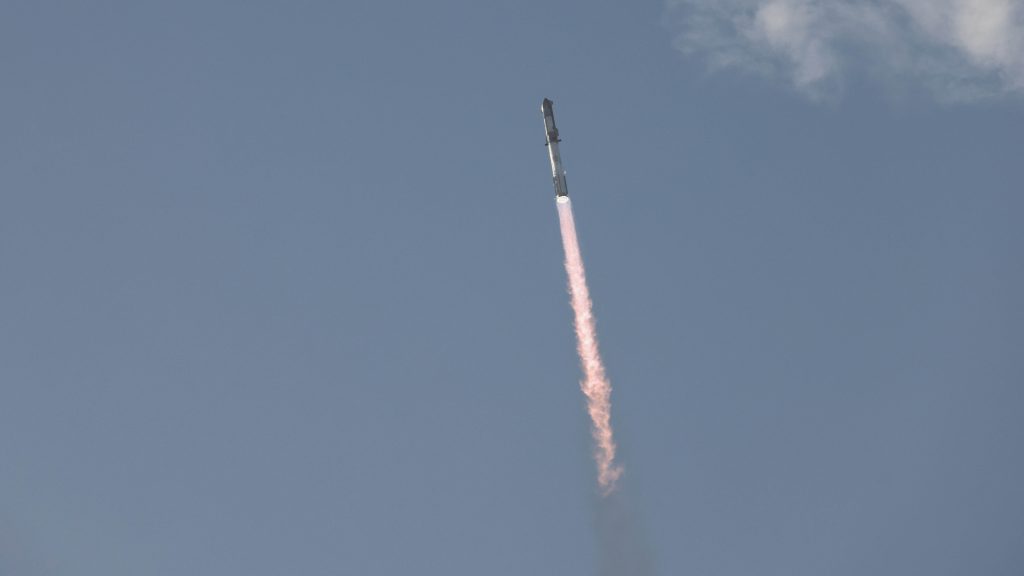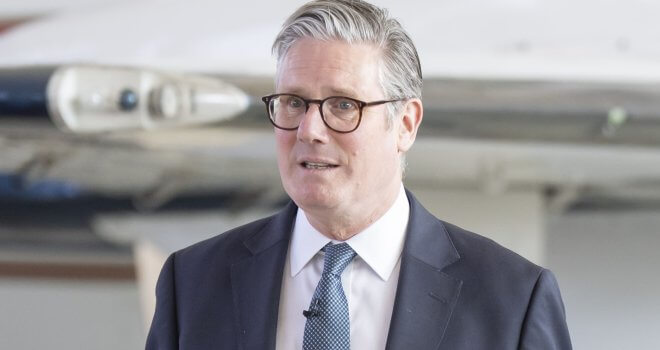SpaceX Starship Launch Failed Minutes After Reaching Space

SpaceX’s uncrewed spacecraft Starship, developed to carry astronauts to the moon and beyond, failed in space shortly after lifting off on Saturday, cutting short its second test but making it further than an earlier attempt that ended in an explosion.
The two-stage rocketship blasted off from the Elon Musk-owned company’s Starbase launch site near Boca Chica in Texas, helping boost the Starship spacecraft as high as 90 miles (148 km) above ground on a planned 90-minute test mission to space and back.
But the rocket’s Super Heavy first stage booster, though it achieved a crucial maneuver to separate with its core Starship stage, exploded over the Gulf of Mexico shortly after detaching, a SpaceX webcast showed.
Meanwhile, the core Starship stage boosted further toward space, but a few minutes later a company broadcaster said that SpaceX mission control suddenly lost contact with the vehicle.
“We have lost the data from the second stage… we think we may have lost the second stage,” SpaceX engineer and livestream host John Insprucker said. He added that engineers believe an automated flight termination command was triggered to destroy the rocket, though the reason was unclear.
About eight minutes into the test mission, a camera view tracking the Starship booster appeared to show an explosion that suggested the vehicle failed at that time. The rocket’s altitude was 91 miles (148 km).
The launch was the second attempt to fly Starship mounted atop its towering Super Heavy rocket booster, following an April attempt that ended in explosive failure about four minutes after lift-off.
The U.S. Federal Aviation Administration, which oversees commercial launch sites, confirmed a mishap occurred that “resulted in a loss of the vehicle,” adding no injuries or property damage have been reported.
The agency said it will oversee a SpaceX-led investigation into the testing failure and will need to approve SpaceX’s plan to prevent it from happening again.
The mission’s objective was to get Starship off the ground in Texas and into space just shy of reaching orbit, then plunge through Earth’s atmosphere for a splashdown off Hawaii’s coast. The launch had been scheduled for Friday but was pushed back by a day for a last-minute swap of flight-control hardware.
TESTING FAILURES
Starship’s failure to meet all of its test objectives could pose a setback for SpaceX. The FAA will need to review the company’s failure investigation and review its application for a new launch license. SpaceX officials have complained that such regulatory reviews take too long.
On the other hand, the failure in a program for which SpaceX plans to spend roughly $2 billion this year was in line with the company’s risk-tolerant culture that embraces fast-paced testing and re-testing of prototypes to hasten design and engineering improvements.
“More things were successful than in the previous test, including some new capabilities that were significant,” said Carissa Christensen, CEO of space analytics firm BryceTech.
“There’s not money and patience for unlimited tests, but for a vehicle that is so different and so big, two, three, four, five tests is not excessive,” Christensen said.
At roughly 43 miles (70 km) in altitude, the rocket system executed the crucial maneuver to separate the two stages – something it failed to do in the last test – with the Super Heavy booster intended to plunge into Gulf of Mexico waters while the core Starship booster blasts further to space using its own engines.
But the Super Heavy booster blew up moments later, followed by the Starship stage’s own explosion. SpaceX in a post on social media platform X said “success comes from what we learn,” adding that the core Starship stage’s engines “fired for several minutes on its way to space.”
A fully successful test would have marked a key step toward achieving SpaceX’s ambition producing a large, multi-purpose, spacecraft capable of sending people and cargo back to the moon later this decade for NASA, and ultimately to Mars.
SpaceX’s worker safety culture underpinning its speedy development ethos is facing scrutiny by lawmakers after a Reuters investigation documented hundreds of injuries at the rocket company’s U.S. manufacturing and launch sites.
CLOCK IS TICKING
NASA, SpaceX’s primary customer, has a considerable stake in the success of Starship, which the U.S. space agency is counting on to play a central role of landing humans on the moon within the next few years under its human spaceflight program, Artemis, successor to the Apollo missions.
NASA chief Bill Nelson, who has made competition with China a core need for speed in Artemis, said Saturday’s Starship test was an “opportunity to learn — then fly again.”
Musk – SpaceX’s founder, chief executive and chief engineer – sees Starship as eventually replacing the company’s workhorse Falcon 9 rocket as the centerpiece of its launch business that already lofts most of the world’s satellites and other commercial payloads into space.
“The clock is ticking,” said Chad Anderson, a SpaceX investor and managing partner of venture capital firm Space Capital. “NASA has a timeline where they’re trying to get to the moon, and this is their primary vehicle to do it. So SpaceX needs to deliver on a timeline.”
Jaret Matthews, CEO of lunar rover startup Astrolab that has booked space on a future Starship flight, toured SpaceX’s Starbase site earlier this year and said he expects the company to swiftly resume tests after the Saturday flight.
Though such a pace is expected to be driven largely by the FAA’s review and the extent of Starship’s technical failures.
“They have the next number of vehicles already lined up in the factory ready to go,” he said. “I think people will be shocked by the cadence that emerges next year.”
(Reporting by Joe Skipper at Boca Chica, Texas, Joey Roulette in New York and Steve Gorman in Los Angeles; Editing by Will Dunham, Ros Russell and Diane Craft)




